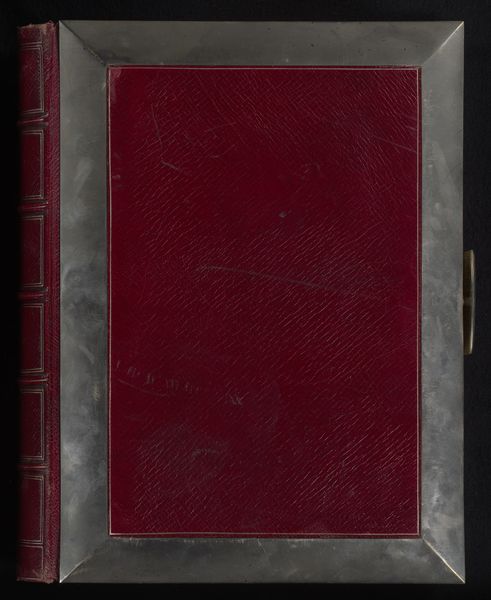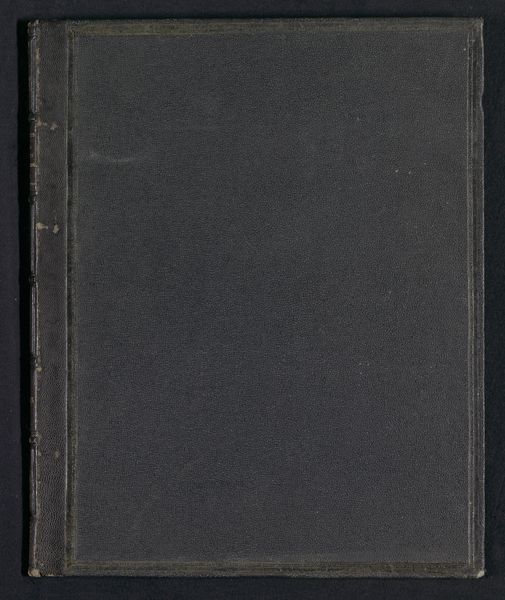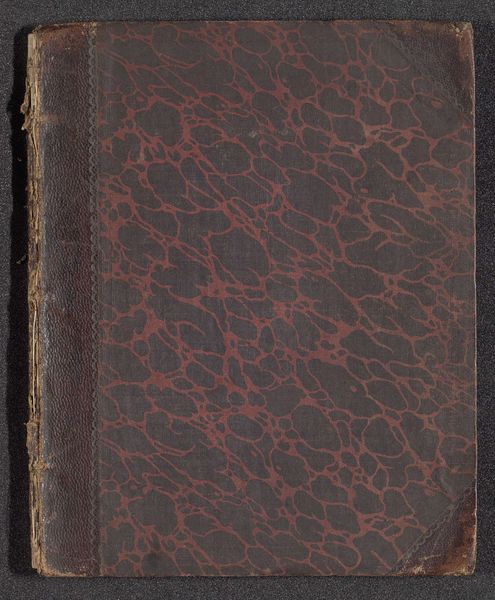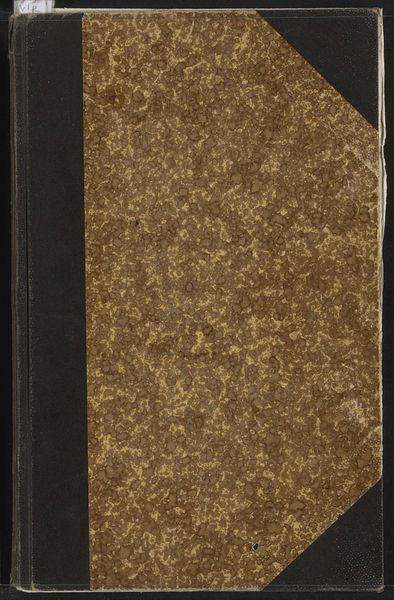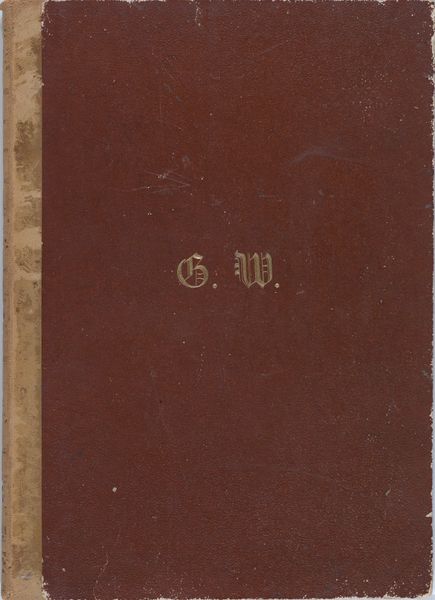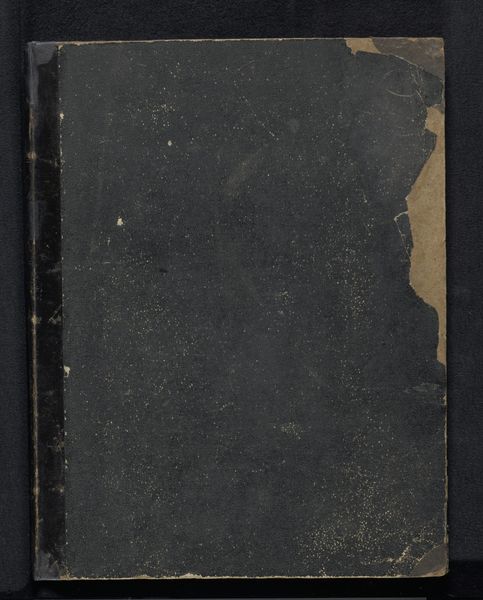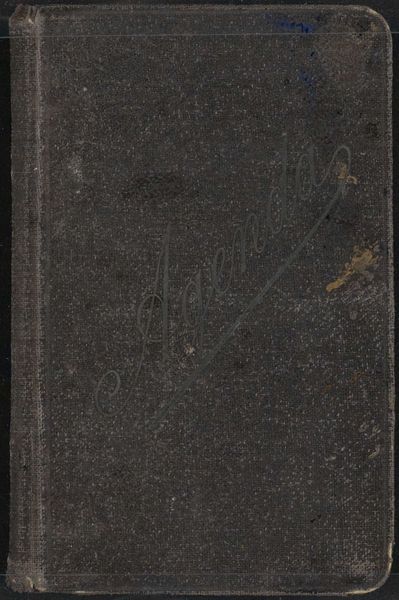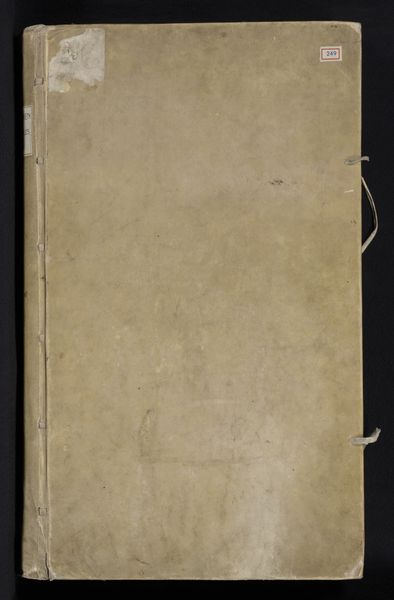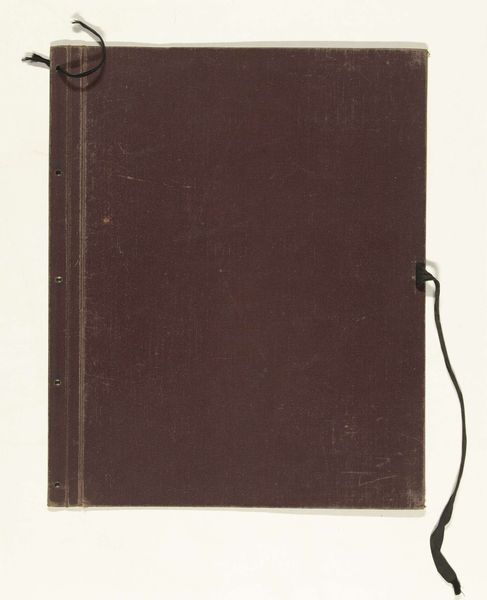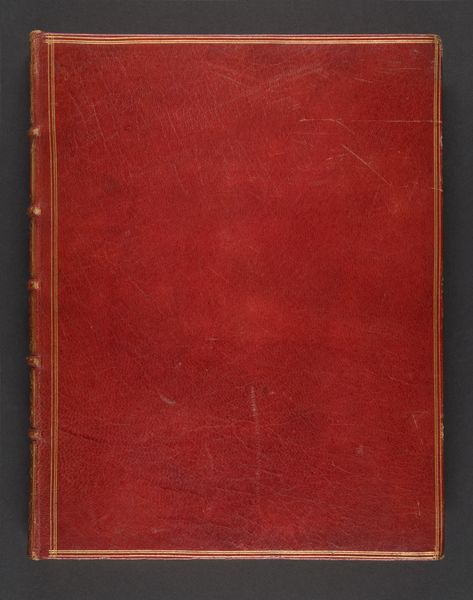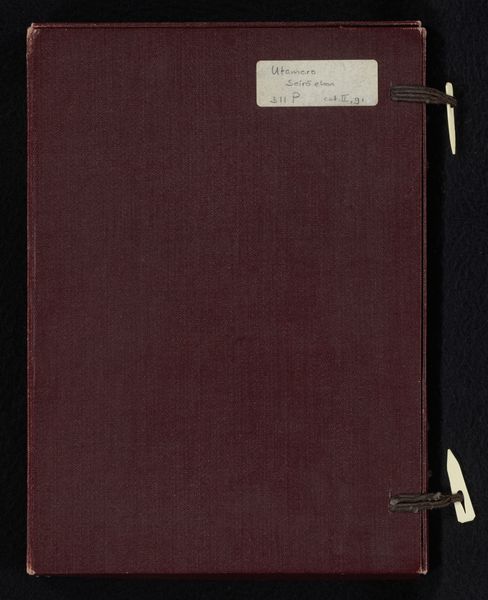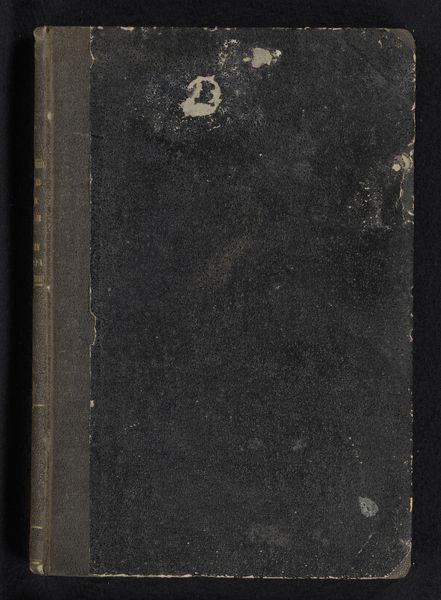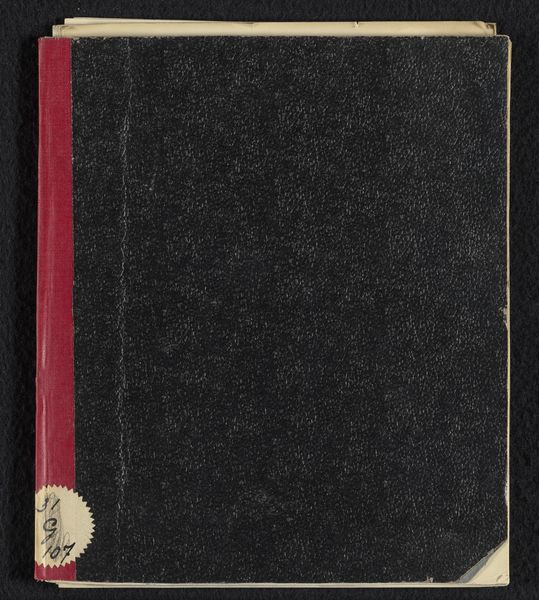
drawing, graphic-art
#
drawing
#
graphic-art
#
16_19th-century
#
book
#
personal sketchbook
#
german
Copyright: Public Domain
Editor: So, here we have Ludwig Metz’s "Skizzenbuch" from 1870, residing at the Städel Museum. It’s a drawing, essentially graphic art, that presents a small, brown book. It just looks like…a commonplace notebook, but I imagine it's much more than that. What do you see here, considering it as art? Curator: Well, let's consider this "Skizzenbuch" not merely as a repository of sketches, but as a produced object within a specific material culture. What was the socio-economic status of readily available paper, binding techniques, and gold lettering like this in 1870? This wasn’t a digital file, after all, easily shared, copied, and distributed. Editor: That makes me consider who would have been able to afford this at the time? Curator: Exactly! Who had access to these materials and skills required for its production? Think about the labor involved – from the manufacture of the paper and cover to the artisan skilled enough to add the gilded “NOTES”. Editor: I see your point. The actual production tells us about the cultural value of the artwork and of sketching itself in the late 19th century. What can we deduce from the textured binding and the “Notes” title? Curator: Precisely! Mass production was increasing accessibility to materials and skills, challenging old hierarchies. "Notes" on the cover implies utility and potential for everyone to produce artworks. Is it subverting the art-craft boundary by making sketching material readily accessible? How does the sketchbook as an object relate to societal shifts happening at this time? Editor: Interesting. I was originally caught up in imagining the *sketches* themselves but now I am thinking much more about the object itself and the industry surrounding it. Curator: That's the core of material analysis: connecting objects to their means of production. Perhaps art can make that visible.
Comments
stadelmuseum almost 2 years ago
⋮
Ludwig Metz took this pencilled sketchbook with him on his journey through Greece and Italy in the spring of 1870. The dates and places noted beneath the drawings reveal that from March to April the 48-year-old Metz visited Nafplio, Tiryns, Argos, Mycenae, Kalamaki, Corinth but also Acqua Acetosa, Naples and Pozzuoli. He almost exclusively captured landscapes, partly with detailed studies of medieval and ancient buildings or ruins. The individual sketchbook pages were used more or less in order, whereby Metz often turned the book’s portrait format into a landscape format, leaving the verso blank. The drawings seem – judging by their style – to have been created rather quickly, appear barely composed and comparatively reduced in detail. They must have been done on the road, standing up, which also explains the clumsy writing, which is difficult to read. Nevertheless, many of the historical buildings are identifiable. Also remarkable are the artist’s notes and calculations, which appear regularly in the book and fill the last pages completely. ‒ See the sketchbook SG 2746 on Metz’s journey to Greece in 1882, also to be found in the Städel Museum.For a full sketchbook description, please see “Research”.
Join the conversation
Join millions of artists and users on Artera today and experience the ultimate creative platform.
